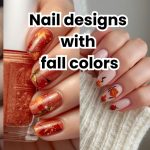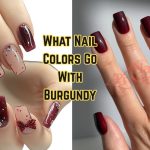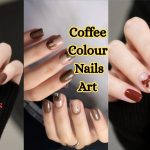As an Amazon Associate I earn from qualifying purchases.
Have you ever painted your nails in a rush, only to smudge them minutes later while trying to grab your keys? I’ve been there—sitting with freshly painted nails, waving my hands around, even blowing on them, desperately wishing they would dry faster. That’s when many of us wonder: can LED light dry regular nail polish?
It’s an honest question, especially when LED and UV lamps are everywhere in nail salons. They’re known for instantly curing gel polish, but does the same apply to regular nail polish? Or is it just a beauty myth?
In this article, we’ll explore the science behind nail polish drying, compare LED/UV lamps with traditional methods, and share expert insights and practical tips. By the end, you’ll know whether that shiny lamp sitting in your drawer can really save you drying time—or if you should stick to tried-and-true techniques.
Can LED Light Dry Regular Nail Polish?
The short answer is no—LED light cannot truly dry or cure regular nail polish. Unlike gel polish, which is specially formulated to harden under LED or UV lamps, traditional nail polish relies on air evaporation to dry.
Here’s why: LED and UV lamps emit specific wavelengths of light that trigger a chemical reaction in gel polish, causing it to harden almost instantly. Regular nail polish, on the other hand, doesn’t contain those light-reactive ingredients. Instead, it dries as the solvents in the formula evaporate into the air—a process that simply can’t be sped up with light.
That said, many people still try LED lamps out of curiosity or impatience. While the warmth of the lamp may slightly help the top layer feel less tacky, the deeper layers of polish remain soft and prone to smudging.
So, if you’ve ever wondered whether your LED nail lamp could double as a quick fix for regular polish, the science says no. But don’t worry—there are smarter, proven ways to cut down drying time, which we’ll explore in the next sections.
How Regular Nail Polish Dries
When you swipe on a fresh coat of nail polish, it feels glossy and wet—but what’s really happening is a tiny chemical process. Regular nail polish dries through the evaporation of solvents (like ethyl acetate and butyl acetate). As these solvents slowly evaporate into the air, the remaining film of color hardens and sets on your nail.
This process depends heavily on air exposure and time. The more airflow around your nails, the faster the solvents can escape. That’s why sitting in front of a fan, waving your hands, or even blowing on your nails can sometimes help—though not always as much as we hope.
Compared to gel polish, which cures almost instantly under LED or UV light, regular polish can feel frustratingly slow. That’s because gel contains photoinitiators—special chemicals designed to react to light wavelengths, locking the polish in place within seconds. Regular polish simply doesn’t have that formula; it’s designed for air-drying only.
To put this into real-life context: when I paint my nails at home, it usually takes at least 15 to 20 minutes before they’re touch-dry, and even then, a slight bump can leave dents or smudges. A full cure (where the polish is truly solid and safe) often takes closer to an hour or more—especially if I’ve layered on two or three coats.
It’s this slow-drying process that makes people wonder if shortcuts like LED lamps might help. But as we’ll see in the next section, the science behind gel curing and air drying couldn’t be more different.

How LED and UV Lights Work
If you’ve ever had a gel manicure, you’ve seen the magic: a fresh coat of color slides on, your hand slips under a lamp, and within 30 seconds the polish is rock solid. But what’s really happening inside those glowing LED and UV lamps?
LED and UV lamps are designed to cure gel polish using photoinitiators. These are special ingredients added to gel formulas that react to specific wavelengths of light. When exposed, they trigger a chemical reaction called polymerization, which hardens the gel into a durable, chip-resistant finish.
Now here’s the key difference: regular nail polish doesn’t contain photoinitiators. That means even if you slide your hand under an LED or UV lamp, there’s nothing in the formula to react. The polish will remain dependent on air-drying, no matter how long you leave it under the light.
This answers two of the most common questions people ask:
- Can you cure regular nail polish with LED light? No—you can’t cure it because there’s no chemical reaction happening. At best, the lamp’s warmth might make the top layer feel less tacky, but the underlying polish stays soft.
- Does UV light cure regular nail polish? Again, no. UV light works wonders for gel formulas, but for traditional polish, it won’t make any difference beyond possibly giving a false sense of dryness.
This is why nail salons always use LED or UV lamps for gels and acrylics, but not for regular polish. Traditional nail lacquers simply weren’t built for light curing—they were built for patience.
Does UV or LED Light Help Dry Regular Nail Polish?
From a scientific perspective, UV and LED lights do not cure regular nail polish. As we covered earlier, curing requires photoinitiators, which only exist in gel formulas. However, there’s a small twist: the warmth generated by these lamps can sometimes speed up solvent evaporation ever so slightly.
That means if you place freshly painted nails under a lamp, the top layer might feel drier faster. But here’s the catch—the deeper layers remain soft, which means your manicure is still vulnerable to smudges and dents. Think of it as a half-baked cake: the outside looks firm, but the inside is still gooey.
When I tested this myself out of curiosity, I slid my freshly polished nails under my LED lamp for about five minutes. At first, it seemed promising—the surface looked less tacky. But the moment I reached for my phone, I ended up with a fingerprint pressed right into the polish. In other words, it was a false sense of dryness.
This clears up two common questions:
- Can you use UV light to dry regular nail polish? You can try, but it won’t truly dry or cure the polish—it may only make the surface seem less sticky.
- Does UV light help dry regular nail polish? Slightly, but not in the way people hope. It might speed evaporation at the top layer, but it won’t give the rock-hard finish that gel polish gets.
In short, lamps aren’t the miracle fix for regular polish. But don’t worry—there are safer, faster, and much more effective drying hacks you can use at home.

Alternatives to Speed Up Drying Regular Nail Polish
If LED or UV lamps don’t work for traditional polish, what does? Luckily, there are plenty of tried-and-true tricks that actually help speed up the drying process—and many of them are simple enough to do at home.
1. Use a Quick-Dry Top Coat
One of the easiest solutions is applying a quick-dry top coat. These formulas are designed to harden faster than standard top coats, sealing in your color while helping the layers underneath set more quickly. They also add shine and protection against chips, making them a double win.
2. Try Quick-Dry Sprays or Drops
Many beauty brands sell drying sprays or drops that work by creating a thin protective layer over your polish. This barrier reduces smudges while helping solvents evaporate a little faster. Drops are especially handy because they spread across the nail in seconds and often contain nourishing oils.
3. The Cold Water Trick
This one’s a classic: after waiting about a minute for your polish to settle, dip your nails into a bowl of ice-cold water for 2–3 minutes. The cold helps “set” the polish on the surface, reducing stickiness. Just be careful not to do it too soon—otherwise, you’ll risk bubbles or smudges.
4. Apply Thin Coats Instead of Thick Layers
Patience pays off here. Instead of slathering on one or two thick coats, apply three or four thin layers. Each thin coat dries much faster, and when layered, you’ll still achieve full opacity with less waiting time.
5. Use a Blow Dryer on the Cool Setting
Heat can sometimes cause polish to wrinkle, but using a blow dryer on the cool setting gives you a blast of air circulation without damaging your manicure. Just keep it about six inches away to avoid blowing dust onto your fresh polish.
What worked best for me? Personally, the combination of thin coats + a quick-dry top coat has been a game changer. With that method, my nails usually feel safe to touch in about 10 minutes, and I can get on with my day without worrying about smudges.
Next, we’ll wrap it all together by comparing gel versus regular polish and helping you decide when it’s worth using a lamp and when patience (plus a few tricks) is the better option.
My Personal Recommendation After plenty of trial and error—yes, including awkwardly sitting with my hand under an LED lamp while hoping for a miracle—I’ve learned one thing: LED light will not dry regular nail polish. It might give the illusion of a less tacky surface, but the deeper layers stay soft, which means smudges and dents are almost guaranteed.
If you truly want fast drying and long-lasting wear, gel polish paired with an LED or UV lamp is the way to go. The curing process locks in shine and strength within minutes, and you can go about your day without the constant fear of ruining your nails.
That said, I know not everyone wants the commitment of gel polish, nor the removal process that comes with it. For traditional polish lovers, the best approach is to embrace natural drying while using smart hacks like thin coats, a quick-dry top coat, or even the cold-water trick to cut down waiting time.
So here’s my honest advice:
For special occasions or a busy lifestyle → Opt for gel polish with LED/UV curing.
For everyday wear or a low-maintenance routine → Stick with regular polish, but use the drying tips above to make the process smoother.
At the end of the day, both options have their place—it just depends on your priorities: convenience and durability vs. flexibility and easy removal.

Frequently Asked Questions (FAQs)
1. Can LED light dry regular nail polish?
No, LED light cannot dry or cure regular nail polish. Regular polish dries through air evaporation, while LED lamps only cure gel polish containing photoinitiators. Using a lamp might make the surface slightly less tacky, but the polish underneath remains soft and prone to smudging.
2. Can you cure regular nail polish with LED light?
No, you cannot cure regular nail polish with an LED lamp. Curing requires specific chemicals present only in gel polish. Regular polish relies entirely on the evaporation of solvents, so a lamp won’t speed up the process effectively.
3. Does UV light cure regular nail polish?
No, UV light does not cure regular nail polish. Like LED light, UV lamps trigger a chemical reaction only in gel formulas. Traditional polish will remain soft and air-dried, no matter how long it is exposed to UV light.
4. Does UV light help dry regular nail polish?
UV light may slightly help the surface of your polish feel less tacky due to the warmth it produces, but it does not truly dry or harden the nail polish. The deeper layers remain soft and can still smudge easily.
5. What’s the fastest way to dry regular nail polish without smudging?
The fastest methods include applying thin coats, using a quick-dry top coat, trying drying drops or sprays, dipping nails in cold water after a minute, or using a cool-blow dryer. Combining thin layers with a quick-dry top coat often gives the best results in around 10–15 minutes.
6. How long does regular nail polish take to dry completely?
Regular nail polish typically takes 15–20 minutes to become touch-dry, but a full cure—when the polish is completely hard—can take an hour or more, depending on layers and formula.
7. Are LED or UV lamps harmful for regular nail polish?
No, they aren’t harmful, but they won’t provide any real benefit. Using lamps on regular polish won’t cause damage, but it won’t improve drying speed either.
8. Can quick-dry sprays or drops replace LED lamps for regular polish?
Yes! Quick-dry sprays or drops work by forming a thin protective layer and slightly speeding up solvent evaporation, making them far more effective than lamps for regular polish.
Conclusion
In summary, LED and UV lamps do not cure or fully dry regular nail polish. While the warmth of these lights may make the surface feel slightly less tacky, the deeper layers of polish remain soft and prone to smudging. For those who want faster results with traditional polish, the best approach is to use proven drying hacks—like thin coats, quick-dry top coats, cold water dips, or quick-dry sprays and drops.
From my personal experience, I’ve switched to gel polish for special occasions because the LED/UV curing process is fast, reliable, and gives a long-lasting finish that regular polish simply can’t match. However, for everyday wear, regular polish paired with smart drying techniques is still a great choice.
I’d love to hear from you! If you have your own tips for drying regular nail polish quickly or tricks that work wonders, share them in the comments below. After all, the best advice often comes from real-life experiences shared by fellow nail enthusiasts.
Amazon and the Amazon logo are trademarks of Amazon.com, Inc, or its affiliates.







